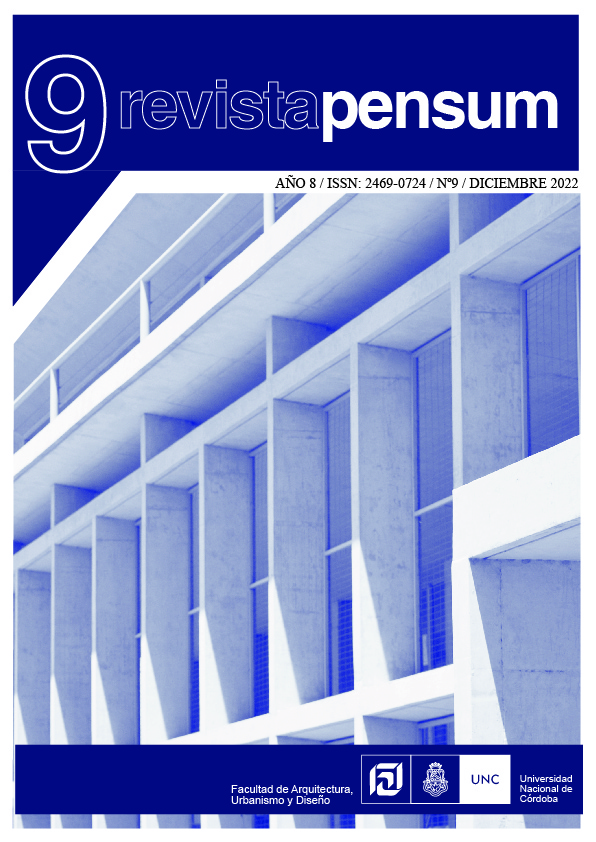Border cities and the transit of migrants
Integration into the socio-urban context of Mexicali, México
DOI:
https://doi.org/10.59047/2469.0724.v8.n9.38252Keywords:
Migration, Border, HabitabilityAbstract
The city of Mexicali, Mexico, has been one of the final stops of the migrant caravans –registered since 2018–, a receptacle for migrants deported from the US and a waiting place for the 'Remain in Mexico' program, characteristics that make it a space of transition. At the same time, this border capital with the state of California has important problems associated with the deficit in equipment and infrastructure, which are reflected in the low quality of public spaces and the precarious state of reception spaces.
The objective of this research project is to know and reflect on the conception and perception of this border city from the perspective of the population in transit, through the collection of information from observation tours, in order to identify the manifestations of integration and appreciation of the urban and social context, taking into account the assumption that migrants, deportees and displaced people live differently from the inhabitants settled in the cities they arrive in and trying to answer how they do so.
References
Alto Comisionado de las Naciones Unidas para los Refugiados (ACNUR). (2020). Tendencias globales de desplazamiento forzado en 2019. https://www.acnur.org/stats/globaltrends/5eeaf5664/tendencias-globales-de-desplazamiento-forzado-en-2019.html
Arellano Sarmiento, L. (20 de febrero de 2019). Llegan integrantes de nueva caravana migrante a Mexicali. Pregonero de Baja California. https://pregonerobaja.com.mx/2019/02/20/llegan-integrantes-de-nueva-caravana-migrante-a-mexicali/
Bauluz, J. (2018, 27 de noviembre). Tercera Caravana Migrante ya está en Mexicali. En el Camino. https://enelcamino.piedepagina.mx/tercera-caravana-migrante-ya-esta-en-mexicali/
Comisión Nacional de los Derechos Humanos (CNDH). (2018). Participación de la CNDH en la Audiencia Regional: Situación de derechos humanos de las personas que integran la Caravana de Migrantes ante la Comisión Interamericana de Derechos Humanos. Informe especial. https://www.cndh.org.mx/sites/default/files/documentos/2019-01/INF-CNDH-CIDH-CARAVANA%5B1%5D.pdf
Unidad de Política Migratoria, Registro e Identidad de Personas (2019). Nueva política migratoria del Gobierno de México 2018-2024. https://www.gob.mx/comar/documentos/nueva-politica-migratoria-2018-2024?idiom=es
De León, N. (2021, 7 de septiembre). Caravana migrante: llega pequeño grupo a BC. Noticias de Mexicali. El Imparcial. https://www.elimparcial.com/mexicali/mexicali/Caravana-migrante-Llega-pequeno-grupo-a-BC-20210907-0026.html
Estévez, A. (2022). The Necropolitica Prodution and Managment of Forced Migration. Londres: Lexington Books.
Gallego, É. (2019, 19 de junio). Mexicali no puede con más migrantes. La Voz de la Frontera. https://www.lavozdelafrontera.com.mx/local/mexicali-no-puede-con-mas-migrantes-3747155.html
Garibay, A. (2021, 6 de diciembre). Baja California está listo para recibir a solicitantes de asilo: Alejandro Ruiz Uribe. El Heraldo de México. https://heraldodemexico.com.mx/nacional/2021/12/6/baja-california-esta-listo-para-recibir-solicitantes-de-asilo-alejandro-ruiz-uribe-360025.html
Gobierno de Mexicali. (2020). ¿Cómo vanos, Mexicali? Observatorio Ciudadano. https://www.mexicali.gob.mx/24/comovamosmexicali/index.php
Gobierno de México. (2021). Atención a 181 mil 64 personas de origen mexicano repatriadas de Estados Unidos. Boletín No. 558/2021. https://www.gob.mx/segob/prensa/atencion-a-181-mil-64-personas-de-origen-mexicano-repatriadas-de-estados-unidos
Guber, R. (2001). La etnografía. Métodos, campo y reflexividad. Grupo Editorial Norma.
Ibarra, M. (2018, 15 de noviembre). Caravana migrante llega a Mexicali. SDPNoticias. https://www.sdpnoticias.com/nacional/mexicali-migrante-caravana-llega.html
Instituto Nacional de Información Estadística y Geográfica (INEGI). (2020). Censo de Población y Vivienda 2020: Tabulados del cuestionario básico. https://www.inegi.org.mx/programas/ccpv/2020/#Tabulados
Izcara Palacios, S. P. y Andrade Rubio, K.L. (2020). El desplazamiento de migrantes centroamericanos. De la migración subrepticia a la migración en masa. Editorial Fontamara.
Peralta Castillo, F. J. (2016). Evaluación en el transporte de la ciudad de Mexicali desde el paradigma de la sustentabilidad. [Tesis de grado, doctoral, Universidad Autónoma de Baja California]. http://arquitectura.mxl.uabc.mx/WEB_MyDPDS/tesis-de-doctorado.html
Redacción ADN40 (2021, 18 de octubre). Deportaciones aumentan durante primer año de Joe Biden. ADN40. https://www.adn40.mx/poder/deportaciones-biden-lmo
Uniradio Informa. (2021, 20 de febrero). Más de 32 mil deportados por garitas de BC en 2020. Uniradio Informa. https://www.uniradioinforma.com/noticias/bajacalifornia/626695/mas-de-32-mil-deportados-por-garitas-de-bc-en-2020.html?utm_region=BC
Vargas Isita, H. (2018, 18 de noviembre), Caravana migrante también llega a Mexicali. Televisa News. https://noticieros.televisa.com/ultimas-noticias/integrantes-caravana-migrante-tambien-llegan-mexicali/
Vera, P. (2019). Imaginarios urbanos: dimensiones, puentes y deslizamientos en sus estudios. En Ciudades (In)descifrables. Imaginarios y presentaciones sociales de lo urbano. (pp.13-40) Universidad Santo Tomás.
Vizcarra, B. (2021) La ciudad desde la mirada de migrantes, refugiados y desplazados: habitabilidad y equipamiento para la frontera norte de México. Revista de Ciencias Tecnológicas, 4(3), pp. 135-156. http://doi.org/10.37636/recit.v43135156
Vizcarra, B., y Peimbert Duarte, A. J. (2021). Infraestructura y sustentabilidad ante la multiculturalidad en la frontera norte de México. Contexto, 15(22), pp. 47-57. https://doi.org/10.29105/contexto15.22-3
Downloads
Published
Issue
Section
License
Copyright (c) 2022 Berenice Vizcarra

This work is licensed under a Creative Commons Attribution-ShareAlike 4.0 International License.
Authors who publish in this journal agree to the following terms:
a. Authors retain copyright and guarantee to the journal the right to be the first publication of the work as well as licensed under a Creative Commons Attribution-ShareAlike 4 license.
b. Authors may separately establish additional agreements for non-exclusive distribution of the version of the work published in the journal (e.g., placing it in an institutional repository or publishing it in a book), with an acknowledgement of its initial publication in this journal.
c. Authors are permitted and encouraged to disseminate their work electronically (e.g., in institutional repositories or on their own website) before and during the submission process, as this may result in productive exchanges, as well as earlier and greater citation of published work (See The Effect of Open Access).
d. 4.0 International Creative Commons Attribution-ShareAlike 4.0 License.












